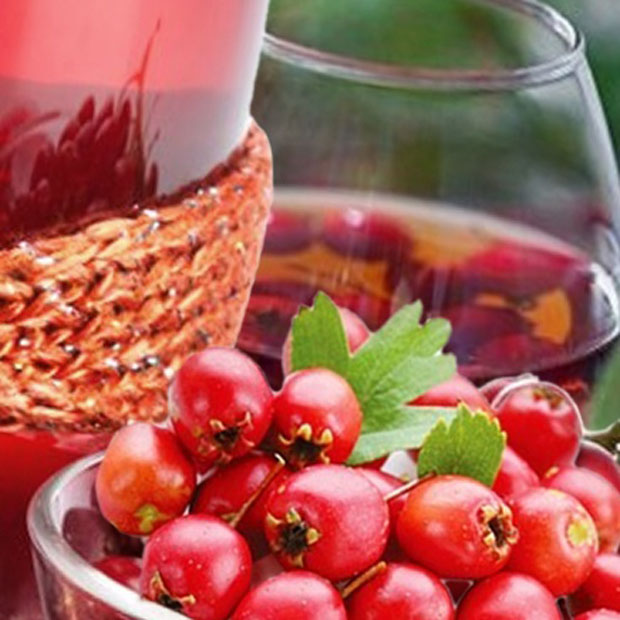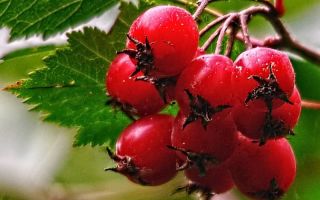Content
- 1 What does a hawthorn look like?
- 2 Chemical composition and calorie content
- 3 Why is hawthorn useful?
- 4 Is it possible to drink hawthorn during pregnancy and lactation
- 5 The healing properties of hawthorn flowers
- 6 Useful properties of hawthorn leaves
- 7 What hawthorn helps
- 8 Hawthorn recipes in folk medicine
- 9 The use of hawthorn in cosmetology
- 10 What can be cooked from hawthorn
- 11 When to collect and how to store
- 12 Contraindications and harm of hawthorn
- 13 Reviews
Almost throughout Russia you can find hawthorn - a small discreet shrub with red berries. What are the benefits and harms of hawthorn, and why are funds based on it used by more than one generation of people?
What does a hawthorn look like?
It is quite easy to distinguish this plant from others. The hawthorn rarely grows large in height, it has bright green leaves pointed at the ends. In late spring, from May to June, the plant produces small white flowers that form small inflorescences. The flowering shrub gives off a pleasant sweetish smell.
Fruits on the bushes of the plant appear closer to autumn, not earlier than August. The bright red berries have a shiny, smooth skin. A distinctive feature of the plant is the presence of sharp thorns on the branches.
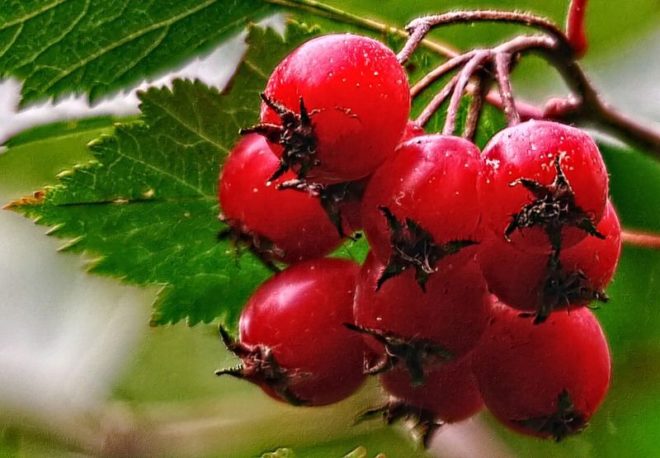
Chemical composition and calorie content
Hawthorn is one of the most useful fruit plants. With a low calorie content - only about 50 calories per 100 g of berries - the fruits contain a lot of useful elements, vitamins and acids.
Namely, the composition includes:
- vitamins A, E, C and D, as well as not the most common K and P;
- B vitamins;
- natural acids in huge quantities - tartaric, citric, malic, ursolic, oleic, cretonic;
- copper, potassium, iron;
- chrome and aluminum;
- rare boron, cobalt and molybdenum;
- organic ester compounds, antioxidants, tannins and flavanoids;
- starch, sorbitol, carotene and dietary fiber.
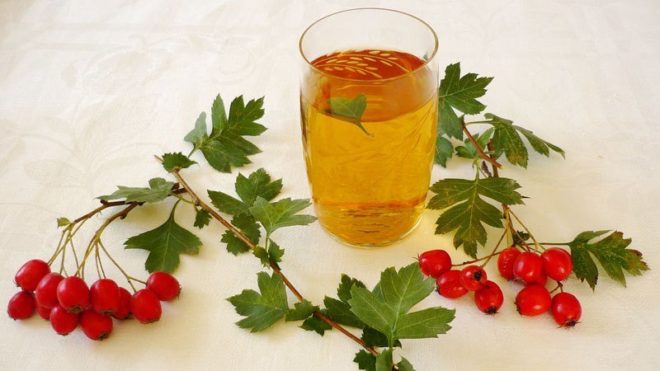
Why is hawthorn useful?
The rich vitamin-acid composition of hawthorn is beneficial for almost the entire body.
In particular, the berries and flowers of the plant:
- contribute to the improvement of the liver;
- qualitatively cleanse the body of accumulated harmful substances;
- improve the work of the heart and blood vessels, preventing the development of atherosclerosis and arrhythmia;
- reduce blood cholesterol;
- relieve migraine pain;
- normalize the work of the stomach and intestines, improve metabolic processes in the body;
- well soothe the nervous system during prolonged stress;
- alleviate allergy symptoms;
- improve the functioning of the thyroid gland.
Does hawthorn raise or lower blood pressure? The benefits of the plant are for hypertensive patients - when using infusions, the pressure drops "down".
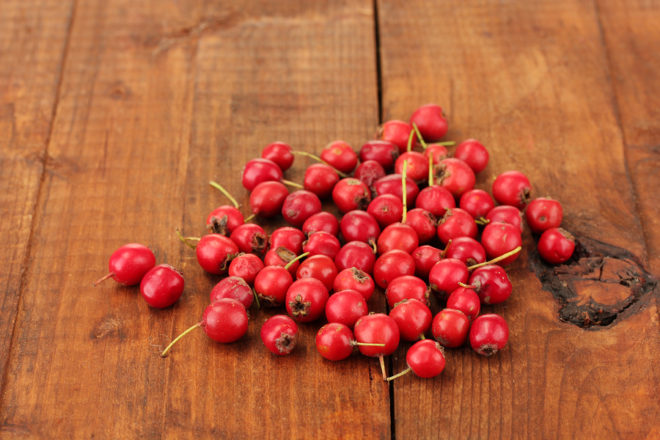
For women
The benefits of hawthorn for women are mainly expressed in its fat burning properties. Regular intake of drinks from this plant helps to maintain slimness and beauty. The great benefit from tinctures and decoctions will be during periods and during menopause - hawthorn has a beneficial effect on the nervous system.
The plant can serve as the prevention of breast diseases, since it prevents the development of mastopathy and tumors.
For men
For the stronger sex, the benefit is that the fruits of the plant stimulate potency and help improve the condition of the prostate. Hawthorn tea and other drinks improve blood circulation, have a mild anti-inflammatory effect and relieve swelling and swelling of the reproductive system.
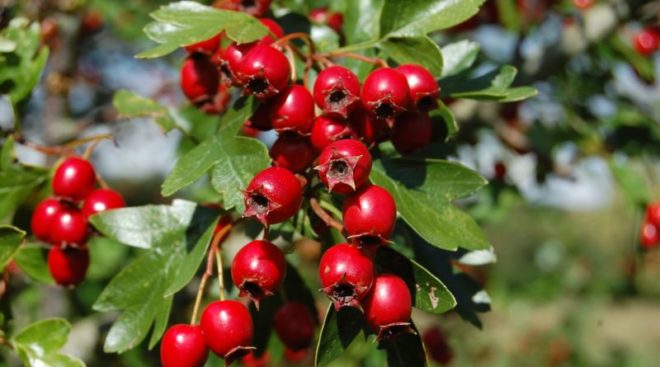
For children
The benefits of hawthorn for children are unconditional, but there is an important nuance - it is impossible to offer infusions and decoctions to a child in any form before the age of 12. But in adolescence in small doses, they will serve as the prevention of cardiovascular disorders, will have a calming effect.
Is it possible to drink hawthorn during pregnancy and lactation
Pregnancy is one of the contraindications for taking hawthorn. Plant-based drinks and foods can trigger early miscarriage.
Hawthorn is absolutely contraindicated for breastfeeding. It can not only cause allergies in the baby, but also cause inconvenience to the mother herself, as it increases the production of breast milk.
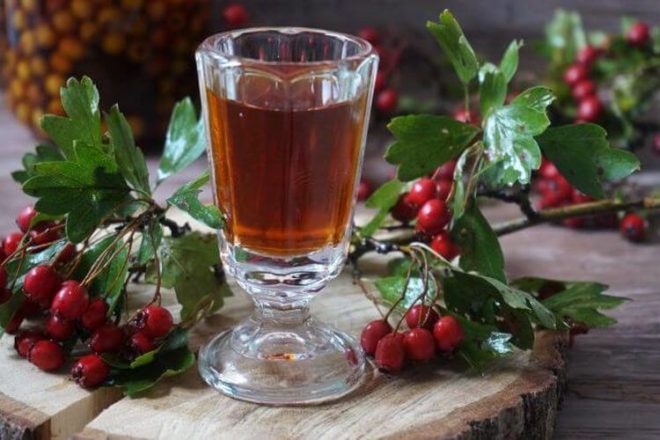
The healing properties of hawthorn flowers
For medicinal and prophylactic purposes, you can use not only the fruits of the plant. Its spring flowers are of great benefit.
In particular, infusions and decoctions:
- help to restore healthy sound sleep;
- relieve vascular spasms;
- lower bad blood cholesterol;
- help to get rid of irregularities in the heart rhythm.
Useful properties of hawthorn leaves
Considerable benefit is stored in the sharp green leaves of the plant.
Decoctions based on them have the following healing properties:
- eliminate heartburn;
- normalize the work of the stomach and intestines;
- positively affect the endocrine and metabolic system;
- strengthen resistance to viruses and infections.
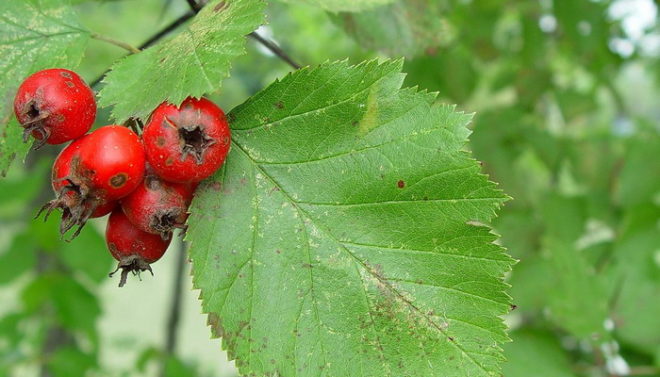
What hawthorn helps
The benefits of the plant are highly regarded in folk medicine.
Homemade hawthorn tincture, decoctions and teas will help:
- with migraines and epilepsy;
- with heart failure and tachycardia;
- with depressive conditions and during insomnia;
- with indigestion;
- with hormonal disruptions and diseases of the genitourinary system;
- for violations in the liver;
- for allergies, dermatological irritations;
- with atherosclerosis, rheumatism.
Hawthorn recipes in folk medicine
There are dozens of recipes that use hawthorn, but only a few are the most popular.
Hawthorn decoction
It takes no more than half an hour to prepare the broth. A small amount of berries - 2 - 3 handfuls - are poured with warm water, and then boiled for 15 minutes. Filter the finished drink, add warm water if necessary. You need to take a decoction of hawthorn 3 times a day for a couple of sips.
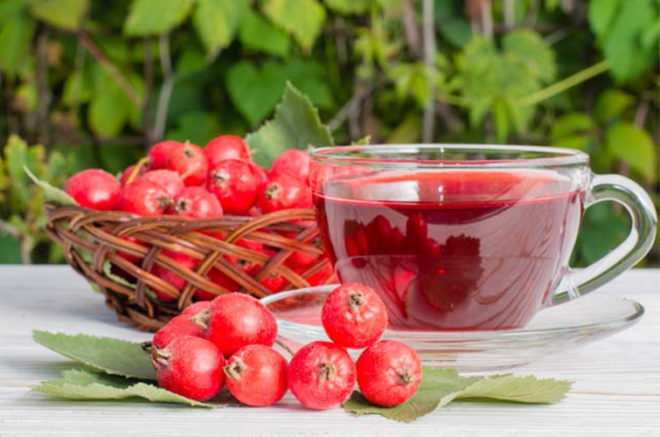
Hawthorn tincture
You can prepare a tincture from any part of the plant. Flowers, fruits or leaves are poured with vodka, and then the dishes are tightly corked and removed to a dark place for 2 months. Shake the dishes from time to time. When the drink is infused, it should be consumed in an amount of no more than 2 teaspoons per day.
Hawthorn infusion
The usual medicinal infusion is prepared as follows - any parts of the hawthorn, fruits, flowers or leaves, are poured with boiling water and left for about 2 - 3 hours. If desired, you can add chamomile flowers to the infusion. Use the remedy for 2 tablespoons a day on an empty stomach.

The juice
The simplest drink based on the fruit of the plant is fresh juice. All you need to prepare it is a sufficient amount of ripe berries and a juicer.If necessary, you can squeeze the berries by hand, carefully filtering them through cheesecloth. They drink juice 3 times a day, but in total, no more than 1.5 glasses.
How to brew hawthorn for the heart
Hawthorn-based drinks are a proven and effective remedy for tachycardia and arrhythmia.
A classic "heart" infusion is prepared as follows:
- a tablespoon of berries is poured with a glass of hot water, covered with a lid and left to infuse for an hour;
- if desired, other useful herbal preparations are added to the infusion - mint, chamomile or lemon balm;
- the finished drink is consumed 3 times a day, in volumes of no more than half a cup.
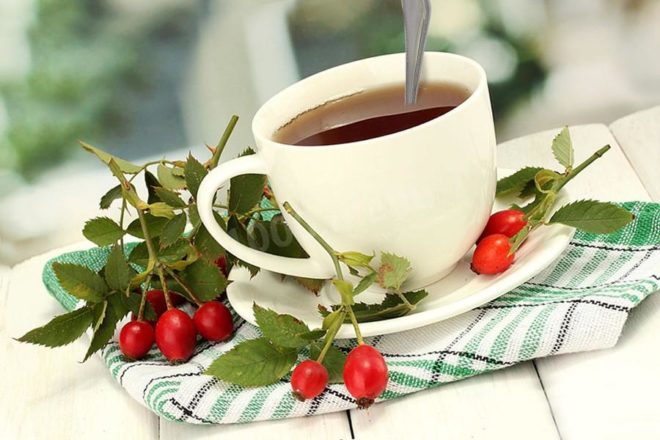
The use of hawthorn in cosmetology
The medicinal properties of hawthorn fruits are in demand not only in medicine, but also in cosmetology. The benefits for hair and skin are that the processed fruits of the plant:
- protect the skin from excess ultraviolet radiation and from bad ecology;
- quickly relieve irritation and inflammation;
- even out skin color;
- nourish the skin and hair with vitamins E, C and K, promoting cellular renewal.
For face
To cleanse the skin, eliminate aesthetic defects and slightly rejuvenate the face, it is enough to wash with the usual hawthorn infusion in the morning and evening. To prepare it, you need to pour hot water over the berries and insist for 30 - 60 minutes.
For hair
The plant will help strengthen the hair, give it shine and eliminate excess oil, if you rinse your hair with a classic decoction during washing. This should be done at least 3-4 times a week - then the benefits will be maximum.
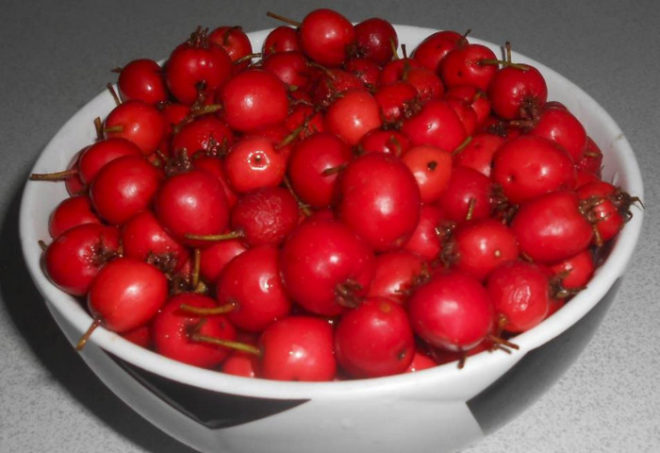
What can be cooked from hawthorn
Decoctions, infusions, juices and teas are not the only options for using the plant's berries. The fruits are actively used in cooking.
In particular, they make:
- preserves, jams and preserves;
- compotes and fruit drinks;
- jelly and sweet candy.
The crushed berries of the plant are often added to baked goods as a filling. Another popular dish is the so-called "raw" hawthorn jam. It differs from the usual one in that the berries are not digested, but simply ground with sugar in a ratio of 1: 2.
The benefits are found in any dishes for which a fruit plant served as an ingredient. Of course, the concentration of valuable substances in jams, compotes or sweets is less than in fresh berries. But all these delicacies have a pleasant taste and help to strengthen the body.
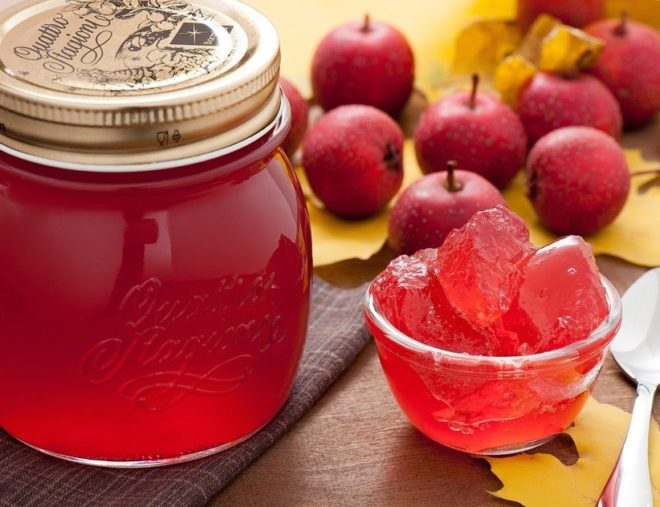
When to collect and how to store
The fresh fruits of the plant can be harvested on their own - fortunately, the shrub grows throughout Russia.
- The best time to harvest fruits is in autumn, from September to October.
- Berries plucked from the bush must be thoroughly washed in clean water, and then immediately used to make sweets or infusions - or dried.
- Hawthorn is dried most often in the oven at a low temperature of about 60 degrees, until the fruits wrinkle and darken. Their benefits are fully preserved. Dried hawthorns can be stored for up to 2 years in the refrigerator.
As for the flowers of the plant, they are harvested in spring and exclusively in dry weather, giving preference to fully opened inflorescences. The flowers are also dried by spreading them out in a thin layer in a shaded place for several days. When dried, the use of flowers lasts up to 1 year.

Contraindications and harm of hawthorn
Basically, for the body, the hawthorn contains benefits. But sometimes the plant can be harmful.
Contraindications for admission are as follows:
- pregnancy and lactation;
- age less than 12 years;
- severe cardiovascular ailments in acute form;
- hypotension - hawthorn from pressure is good only for hypertensive patients.
Drinks from the plant can be consumed before meals, but it is not recommended to take them with a strong feeling of hunger - this will cause vomiting and abdominal pain. Fresh fruits should be eaten no more than 150 g per day.
